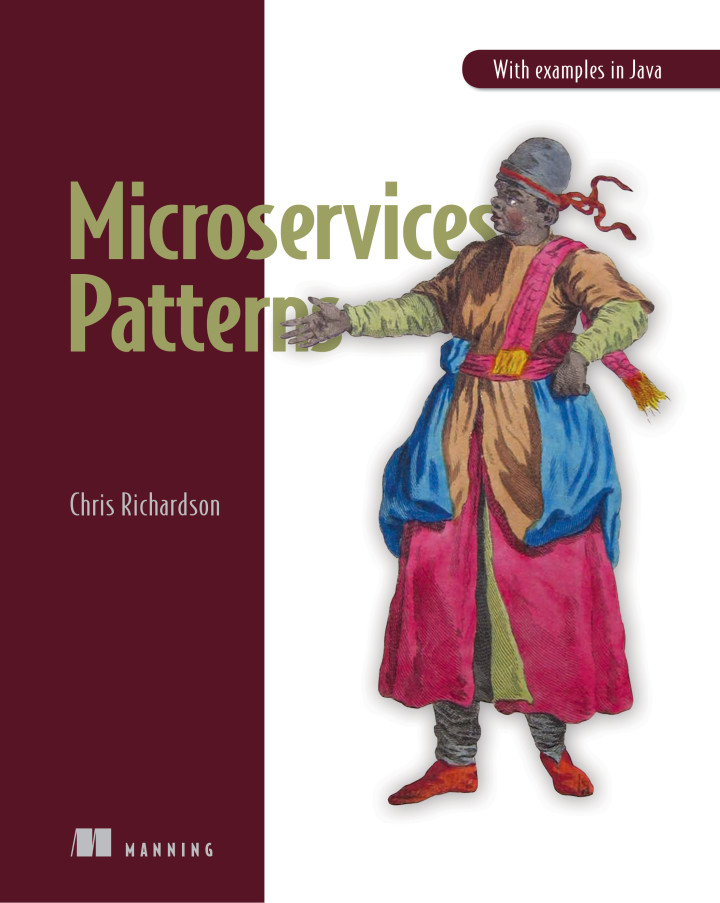This is the example code for my book Microservice patterns.
-
The code is still work in progress
-
It primarily illustrates the technical aspects of the microservice architecture and so the business logic is minimal
-
The documentation is sparse/non-existent and you will need to look in the book
-
The application consists of many services and so requires a lot of memory. It runs well, for example, on a 16GB Macbook pro.
-
The application’s services and the infrastructure services, such as MySQL and Apache Kafka, are deployed using Docker containers using either Docker Compose or Kubernetes.
Please post a message to the book’s discussion forum or create a github issue. I’ll do my best to help you.
Not surprisingly, this application has a microservice architecture. There are the following services:
-
ftgo-consumer-service - the
Consumer Service -
ftgo-restaurant-service - the
Restaurant Service -
ftgo-order-service - the
Order Service -
ftgo-kitchen-service - the
Kitchen Service -
ftgo-accounting-service - the
Accounting Service -
ftgo-order-history-service - a
Order History Service, which is a CQRS view -
ftgo-api-gateway - the API gateway
Key points:
-
A service consists of a single Gradle module. For example,
ftgo-order-serviceimplements theOrder Service -
A service is a Spring Boot application
-
A service has a Swagger UI
http://…/swagger-ui.html. Seeopen-swagger-uis.sh -
A service typically consists of the following packages:
-
domain - domain logic including aggregates
-
messaging - messaging adapters
-
web - Spring MVC controllers (HTTP adapters)
-
main - the main application
-
-
The services use the following other frameworks
-
Eventuate Tram framework- implements transactional messaging -
Eventuate Tram Saga framework- implements sagas -
Eventuate Client framework- implements event sourcing
-
This section maps the chapters to the code.
-
The services have a REST API
-
The services also communicate using the Apache Kafka message broker via the
Eventuate Tramframework
The ftgo-order-service uses sagas to maintain data consistency:
The services that participate in these sagas define the following command handlers:
-
Accounting ServiceAccountingServiceCommandHandler -
Consumer ServiceConsumerServiceCommandHandlers -
Kitchen ServiceKitchenServiceCommandHandler -
Order ServiceOrderCommandHandlers
All the services' business logic is implemented using Domain-Driven design aggregates.
-
Accounting Service-
Accountaggregate in the ftgo-accounting-service
-
-
Consumer Service -
Order Service -
Kitchen Service -
Restaurant Service
-
The
Accountaggregate in the ftgo-accounting-service is implemented using event sourcing
-
ftgo-order-history-service is an example of a CQRS view
-
ftgo-api-gateway uses API composition to implement the REST endpoint for retrieving the order history
-
ftgo-api-gateway is the API gateway
-
Java 8+
-
Docker and Docker Compose
-
Internet access so that Gradle and Docker can download dependencies and container images
Temporary: Build the Spring Cloud Contracts using this command:
./build-contracts.shBuild the services using this command:
./gradlew assembleTo run the application you must set the DOCKER_HOST_IP environment variable to the IP address of where the Docker containers are running:
-
Docker toolbox/Virtual machine - IP address of the virtual machine
-
Docker for Windows/Mac/Linux - IP address of your laptop/desktop
Please do NOT set it to the (unresolvable) hostname of your machine, localhost or 127.0.0.1.
You must also set the AWS environment variables.
Run the application using this command:
docker-compose up -dThis can take a while.
Use the services Swagger UIs to invoke the services.
-
Create consumer -
http://${DOCKER_HOST_IP?}:8081/swagger-ui.html -
Create a restaurant -
http://${DOCKER_HOST_IP?}:8084/swagger-ui.html -
Create an order -
http://${DOCKER_HOST_IP?}:8082/swagger-ui.html -
View the order -
http://${DOCKER_HOST_IP?}:8082/swagger-ui.html -
View the order history -
http://${DOCKER_HOST_IP?}:8086/swagger-ui.html
You can also access the application via the API Gateway at http://${DOCKER_HOST_IP?}:8087.
However, currently it doesn’t have a Swagger UI so you will have to use curl, for example.
You can find Kubernetes YAML files in the following directories: deployment/kubernetes and */src/deployment/kubernetes.
There are also some helpful shell scripts.
You can run this command
./deployment/kubernetes/scripts/kubernetes-deploy-all.sh
